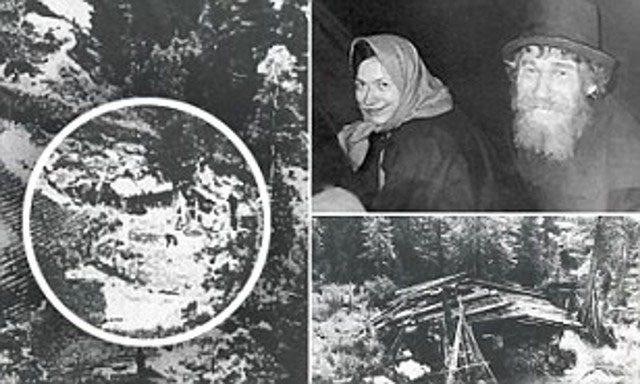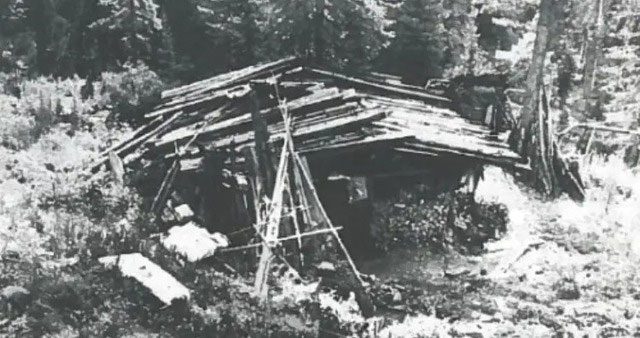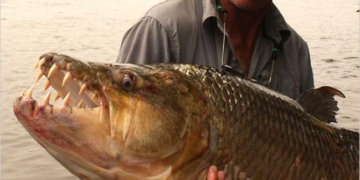In 1979, a group of Soviet geologists studying the wilderness of Siberia stumbled upon a family of six who had been lost in a coniferous forest and swamp. They later discovered that this family had lived completely isolated from civilization for 42 years! They were even unaware of World War II.
The Taiga Forest in Siberia is notorious for its dangers. The forest comprises miles of pine and birch trees, with a short summer and a cold, harsh climate. Moreover, hungry wolves and bears are common sights throughout the forest, making the taiga nearly impossible for human habitation. However, in 1979, a Russian helicopter pilot found human habitation in the midst of the taiga, and he could hardly believe what was happening before his eyes.
At that time, the helicopter pilot was searching for a place to drop off a group of geologists. This was when he noticed a small clearing in the forest. The ground had dark furrows that could only be made by humans, leading him to discover the Lykov family. This family had retreated into the wilderness in 1936 and had remained there, far from civilization, for the past 42 years.

The Lykov family are ‘Old Believers’. This means they were members of a Russian Orthodox sect that broke away from mainstream Orthodoxy. This particular religious group has faced persecution since the time of Peter the Great in the 18th century. Many Siberians fled the country to escape religious oppression.
One day, while working in the fields, young Karp Lykov saw an armed group arrive and kill his brother. This prompted him to decide to take his family to safety. So, on a beautiful day in 1936, Karp, along with his wife Akulina and their two children, Savin and Natalia, fled their home. At that time, Savin was nine years old, and Natalia was just two. With nowhere else to go, Karp decided to venture deeper into the forest to keep his family safe.
They continued to venture deeper into the woods over the next few years. Eventually, they reached a remote location on a mountain slope and established their home. They built a cabin nearly 6,000 feet up on the mountain.
In 1940, Karp and Akulina welcomed their son Dmitry. Two years later, their youngest daughter Agafia was born. The family remained in the isolated forest without human contact for the next 42 years.

Since cutting off all ties to civilization in 1936, the Lykov family survived off food they found in the forest. Once, during a harsh winter, they had to eat leather shoes. When the geological team found them and offered to help them leave the forest, the family refused.
The group of geologists, upon hearing the pilot’s observations, decided to investigate. They prepared a few gifts for the people they might meet and set off. Upon arrival, they began to notice signs of human activity, such as small paths and logs crossing streams. Eventually, they reached the Lykov’s home.
When they saw the visitors arrive, an old man stepped out of the hut, barefoot and dressed in burlap clothing. Initially, he did not respond to their greetings but later invited them inside. The geologists recounted that the hut had only one room illuminated by a small window. Scattered across the filthy floor were burnt pieces of wood. Upon seeing the guests enter, the women Agafia and her sister Natalia were terrified.
Gradually, the geologists were able to piece together the Lykovs’ survival story. Karp told them that they had brought a few supplies and clothes with them, but over the years, these had worn out. Their diet mainly consisted of potatoes mixed with ground rye and hemp seeds. When a harsh frost hit in 1961, all the crops in their garden died. They had to eat leather shoes to satisfy their hunger. That year, Karp’s wife, Akulina, died of starvation.
Initially, the Lykov family did not accept any gifts from the geologists except for salt. But gradually, they accepted some other items like knives, utensils, and grains. However, they refused all offers of help to take them out of the forest and into the civilized world.

Tragically, in 1981, shortly after being discovered, three of the four Lykov children died. Their deaths were likely a result of the Lykov family’s exposure to modern diseases to which they had no immunity. Agafia Lykov, the youngest daughter, now 80 years old, continues to live on her family’s small plot of land to this day.
A few years after being discovered, three of the Lykov children died. Savin and Natalia both suffered from kidney failure. Dmitry contracted pneumonia and succumbed to it. When the geologists noticed Dmitry’s health deteriorating, they offered to send a helicopter to take him to the hospital. But Dmitry refused, saying: “We are not allowed to do that. A man’s life span is determined by what God grants.” It is believed that their prolonged isolation from modern society put them at risk for modern diseases. Their bodies could not combat illness due to their lack of immunity.
Karp and Agafia were urged by the geologists to leave the forest and reunite with relatives, but they remained steadfast in their decision to never leave the woods, which they regarded as their home. Karp eventually passed away on February 16, 1988.
Agafia, now 80 years old, continues to live on her family’s land even after her family’s passing. She has ventured outside her family’s settlement only six times in 70 years. The first time was in the 1980s when the Soviet government paid for her to visit the Soviet Union for a month. This was also the first time in her life that she saw airplanes, horses, cars, and money during her travels. After that, she only left the forest to seek medical treatment, meet with Old Believers, and spend time with some other relatives.


















































